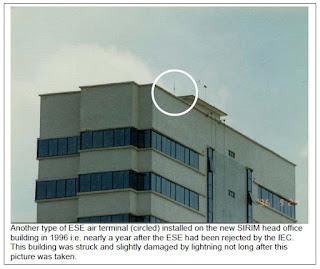SOLAR ENERGY SYSTEM
Solar
energy as renewable energy (RE)
Solar energy is renewable energy in which
energy are generated from natural resources that can continually be
replenished. It is clean, and it doesn’t contribute to global warming either
through pollution or green gas omissions. Thus, it is environmental-safe. Not
only that, RE gets significantly cheaper as time and technologies progress too.
Literally, solar energy is the radiation
energy being produced by the sun.
Figure 1: Solar energy is the radiation energy from sun
(Source: ZME Science)
Usage projection & current solar energy
consumption
The International Energy Agency projected
in 2014 that under its ‘high renewables’ scenario, by 2050, solar photovoltaic
(PV) and concentrated solar power (CSP) would contribute to about 16% to 11%
respectively of the worldwide electricity consumption. The following is the
ranking of countries with their current solar energy consumption.
Ranking
|
Country
|
Installed
PV [MW]
|
1
|
Germany
|
32,411
|
2
|
Italy
|
16,361
|
3
|
China
|
8,300
|
4
|
USA
|
7,777
|
5
|
Japan
|
6,914
|
6
|
Spain
|
5166
|
7
|
France
|
4,003
|
8
|
Belgium
|
2,650
|
9
|
Australia
|
2,650
|
Figure 2: Statistics shown by Renewable Energy Policy
Network for 21st century (REN21) (Source: Renewables 2014 Global Status Report)
Advantages of solar energy
- Renewable energy source: Among all the benefits of solar panels, the most important thing is that solar energy is a truly renewable energy source.
- Reduce electricity bills: Since you will be meeting some of your energy needs with the electricity your solar system has generated, your energy bills will drop
- Low maintenance cost: Solar energy systems generally don’t require a lot of maintenance. You only need to keep them relatively clean, so cleaning them a couple of times per year will do the job
- Environment safety
- No noise and no moving part
Disadvantages of solar energy
- Cost: The initial cost of purchasing a solar system is fairly high:
- Large area needed to gain more energy: The more electricity you want to produce, the more solar panels you will need because you want to collect as much sunlight as possible
- Solar energy storage is expensive: Solar energy has to be used right away, or it can be stored in large batteries. These batteries, used in off-the-grid solar systems, can be charged during the day so that the energy is used at night.
- Weather dependent: Although solar energy can still be collected during cloudy and rainy days, the efficiency of the solar system drops. Solar panels are dependent on sunlight to effectively gather solar energy
Solar
energy can be used in two ways: -
A. Passive
solar:
Passive solar energy is
the direct use of the heat and light energy absorbed for heating, lighting,
drying, ventilation purposes etc. It is used in both architectural and urban planning
by applying the green house concept, but also used in agriculture and horticulture,
where techniques such as timed planting cycles, tailored row orientation,
staggered row heights, mixing of plant vegetation, fruit walls, ad drying chicken
manure are used.
1. Direct
gain:
The presence of
large and south facing exterior windows allows the sunlight to enter the
building. In order to absorb radiation, thermal mass is used. The overhang also
perfectly protects the large panel of window from higher angle summer sun but
give access to lower angle winter sun, allowing it to absorb more heat during
winter season. The sunlight is absorbed by the concrete flooring in the morning
and the heat is reradiated back to the living space at night, providing warmth
and next cutting down expenses required for HVAC system.
2. Indirect
gain:
Collect and
stories the solar energy in one part of the house (thermal mass) and use
natural heat transfer to distribute heat to the rest of the house. The thermal
mass most commonly used is the Trombe Wall which is a massive masonry that acts
as the solar collector.
3. Attached
Sunspaces:
Uses a combination
of direct and indirect-Gain systems that use water arums and a masonry floor as
heat storage in the attached greenhouse. This conservatory can’t be
overpopulated with vegetation as the foliage might cover and shade the floor or
wall as heat absorber and collector.
B. Active
solar:
Active solar
convert the power from the sun and amplifies it using some special equipment.
The solar panel is basically made up of the low iron tempered glass covers with
a dark metal plates to absorb heat at the bottom of it, and also an insulated
aluminium large flat box. It can provide 50 – 80% of household hot water
required on a daily basis. The technologies used in generating electricity from
active solar system include photovoltaic method (PV) and concentrated solar power
(CSP).
1. Photovoltaic
Cell (PV)
When sunlight strikes the
surface of solar panel, the photons from the light hits the electrons in the
negative plate (N- type semiconductor), where the energy is transferred from photons
from the electrons. The electrons then flow to the equipment, and the flow of
these electrons create current. The semiconductors that are commonly used are
phosphorus, boron and silicon.
2. Concentrated
Solar Power (CSP)
Lenses or mirrors plus
tracking system is used to focus a large area of sunlight into a small beam of
transmitting the energy to the applications. It is contrary to PV in which PV
converts light directly into electricity, but CSP makes use of the radiation
energy from sun to generate electricity from the conventional steam driven
turbine system. Technologies in tracking and focus sunlight include parabolic trough,
compact linear Fresnel reflectors, parabolic dish and solar power tower.
Parabolic Trough
It consists of aa linear
parabolic trough that concentrates the sunlight into a receiver filled with
working fluid which is located on the reflector’s focal line. The working fluid
then will pass to various heat exchanger and enter condenser to be discharged
to turn the turbines, generating electricity. This system provides the best
land-use factor of any of the solar technology.
Compact Linear Fresnel
Reflectors
It uses many linear thin
mirror strips to concentrate the sunlight into two tubes (linear absorber) with
working fluid. The working fluid then undergoes the same process as the one in
parabolic trough. This system is relatively cheaper, and a larger amount of
reflectors can be placed in the same area of space, indirectly minimising the space
consumed.
Parabolic Dish
It combines a parabolic
concentrating dish with a Stirling engine which normally drives an electric
generator. Stirling solar is of higher efficiency in converting sunlight into electricity.
And also, it has a longer lifetime.
Solar Power Tower
It comprises a central
receiver and a field of heliostats where the array of tracking reflectors (heliostats)
will focusing the light onto the central receiver with air. The air then enter
an air circuit and electricity generating system consisting of several steam
generators and thermal storage and turbines. This is the most cost- effective
technology among all, yet it offers higher efficiency. Better energy storage capability
is achieved by this solar power tower too.
NOT ALL ENERGY IS
CONVERTED
However,
not all energy strike on the surface is converted. Only when the photons hit
the electrons, and the energy of the photons equals to that of the electron,
absorption occurs.












































